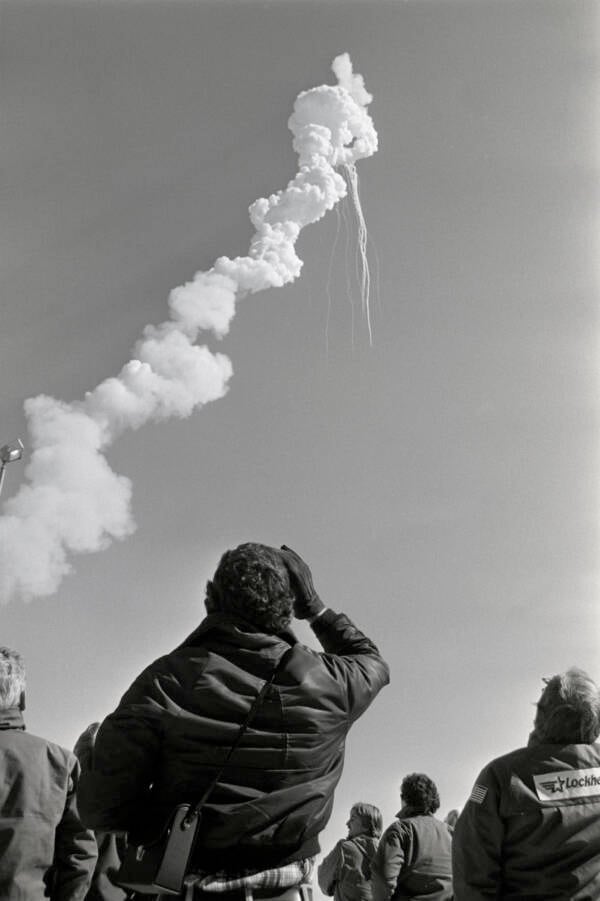

#NASA SPACE SHUTTLE CHALLENGER DISASTER FREE#
That became yet another concern, since ice could break free at launch and damage the shuttle.


This, in turn, covered the launch pad with ice. At 7 that morning, a temperature of 24 degrees was reported at the shuttle's launch pad.ĭue to the very cold weather, technicians turned on the launch pad fire suppression system at a low rate to prevent freezing during the night. Temperatures at the launch pad were expected to drop in the upper teens by the morning of January 28. The solid rockets were rated to be flown at temperatures of 39 degrees Fahrenheit and higher. Where the segments came together, rubber O-rings were used to create a tight seal to prevent exhaust gases from leaking at these joints. These solid rockets were not one piece, but were segments stacked together to form the rocket. The night before the scheduled launch, engineers with Morton-Thiokol, the manufacturer of the shuttle's solid rocket motors, expressed worries as to how the cold would affect the twin solid rockets attached to either side of the shuttle's external fuel tank. It was this forecast of very cold temperatures that caused concern among scientists and engineers with the space shuttle program. With the passage of the cold front on January 27, arctic air dropped into Florida, setting record lows across the state. Those strong winds were caused by a cold front that would bring freezing temperatures to the launch site the next morning.Īnd with that, that stage was set for the events of January 28. By the time they resolved the problem, winds had picked up at Kennedy Space Center and were too strong for an emergency return to launch site abort if necessary. During orbiter closeout, technicians ran into problems with an exterior hatch handle. However, the bad weather never developed and the shuttle could have launched that day.Īll looked "go" for launch on January 27. The forecast for January 26 called for "no-go" conditions during the launch window, so NASA officials decided to cancel the planned launch for that day based on the forecast. The next delay was for weather that never happened. In the event of an emergency, there were designated runways around the world if the shuttle needed to make an emergency landing after launch. The next launch reschedule was because of bad weather at the shuttle's Trans-Atlantic abort site at Dakar, Senegal. This led to launch reschedules for Challenger's flight. The weather prevented the orbiter from returning to Earth three times. The first was when the previous mission, STS-61C, a Space Shuttle Columbia flight, had multiple landing delays while trying to end its mission earlier that January. Before the fateful launch on that cold January morning, there were several instances when weather played a role leading up to the accident.


 0 kommentar(er)
0 kommentar(er)
